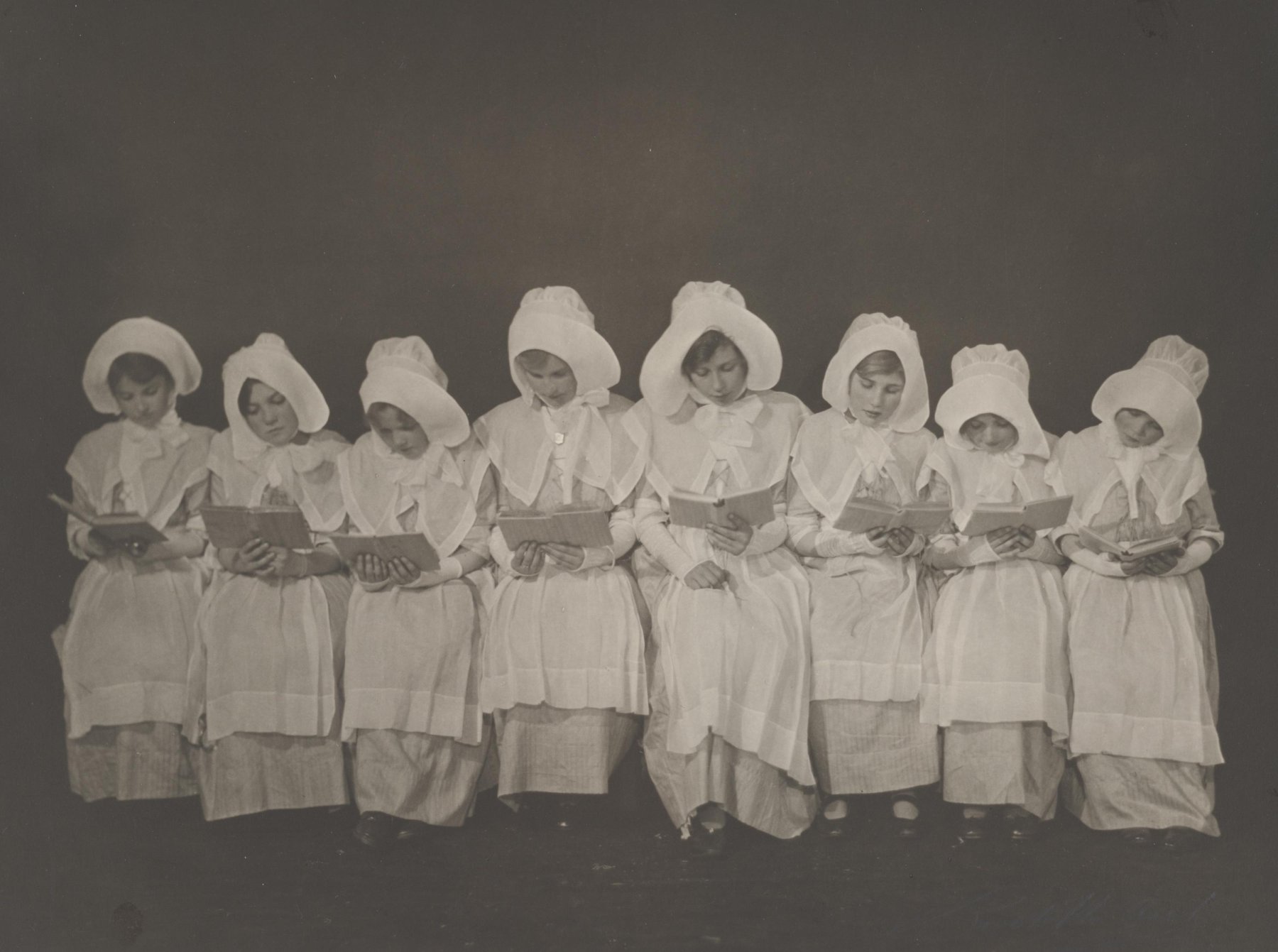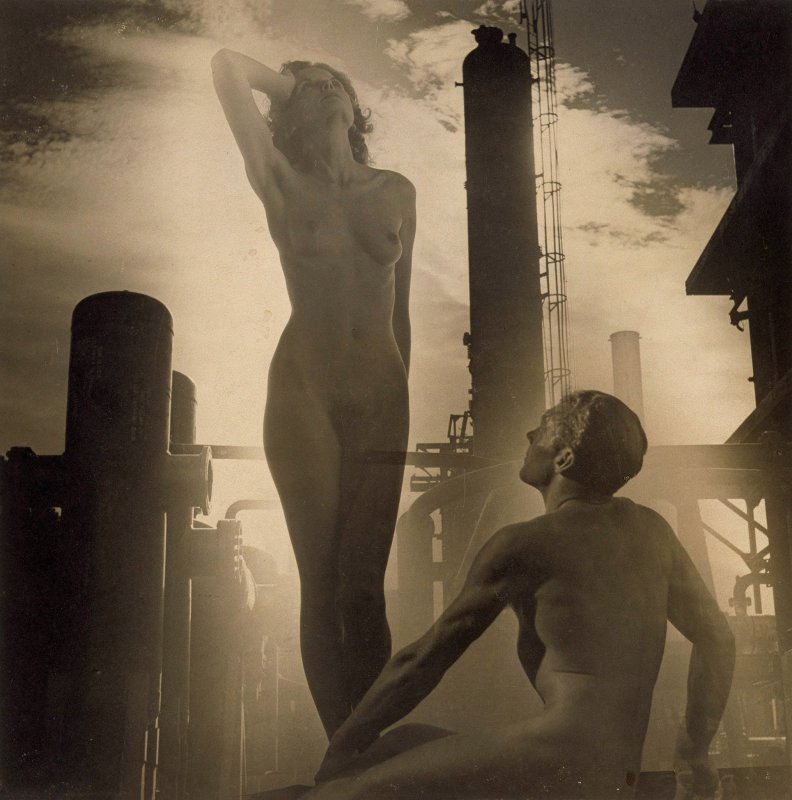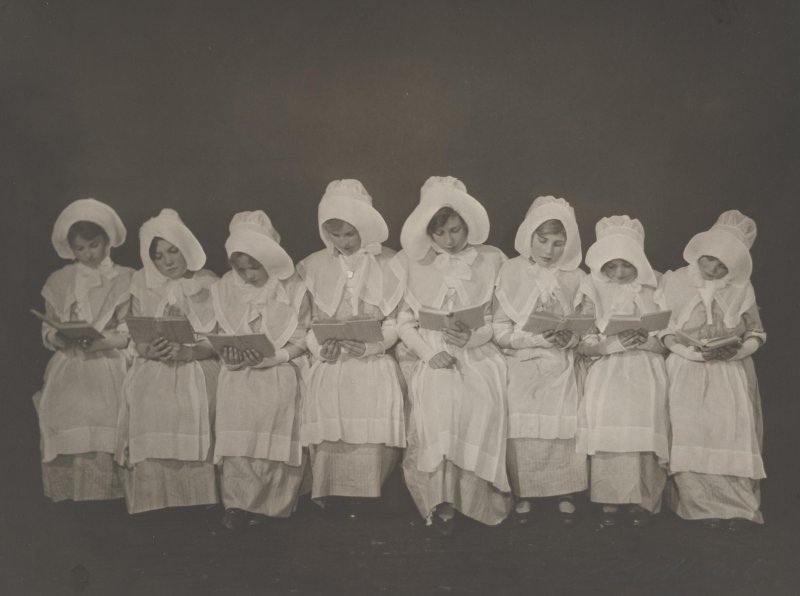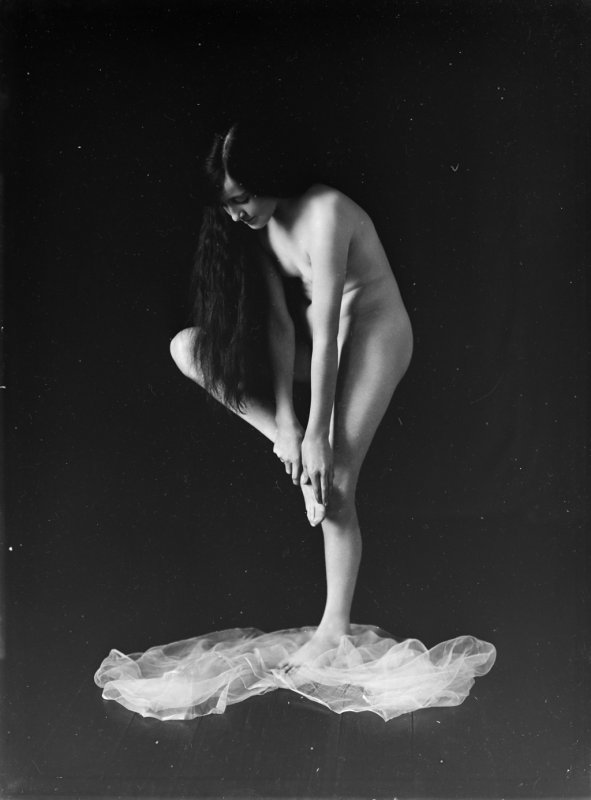The Mirror
EditorialAboutA+a Study CentreA+a ArchiveShopClose Menu

At present, there is cacophonous noise around the ramifications of cutting-edge AI software such as DALL-E that can endlessly reproduce and remix images in its dataset. This hype around auto-generative AI assumes a form of creation that is entirely new. However, the acceleration of automated image production has haunted modernity since the revolutionary imprints of the daguerreotype or, debatably, the Renaissance camera obscura and its roots in ancient Chinese pin-hole projection. Like many new things, it has fateful traces that’ve been hyping it into being for some time.
A concurrent agent of the new, fashion acts as a measure of our cyclically reproductive image culture that communicates at street level; it is the nature of the world’s appearance as transformed by cultural product. As the new takes hold through fashion, it is no coincidence that Manuel de Landa and Sadie Plant attribute a critical ‘migration of control from human hands to software’ with the invention of the Jacquard weaving loom in the mid-nineteenth century.1 It appears the history of fashion and the history of photography are linked by their inherence to the acceleration of reproductive technology rapidly effecting the human. For William Gibson and Walter Benjamin, fashion and photography belong to the machinic world that runs alongside our own, visible only through the looking glass.
This brief article acts as a preliminary investigation into Gibson and Benjamin’s ‘mirror-worlds’ to unveil their potential connection to the discourse on AI. By looking through the lens of Australian fashion photographer Ruth Hollick, I will experiment with bringing these ideas to form. Here, a look to technological forms of the past may reveal future trajectories than our present, discrete nebula of CGI banality and generative AI continues to scramble in its leviathan.
Benjamin and Gibson’s Time-Travelling Dimensions of Style
In his 2003 cyberpunk novel Pattern Recognition, William Gibson’s heroine Cayce Pollard, appropriately named after clairvoyant Edgar Cayce, has a pathological response to the branding of techno-capitalism. Resulting from an ‘overexposure to the reactor cores of fashion’, Cayce manifests an allergic reaction to oversaturated consumer trends alongside a paralysing phobia of kitsch corporate logos. Cayce’s sensitivity bolsters her position as a ‘coolhunter’, a particularly ruthless brand strategist in Gibson’s London of the near past. Cayce’s sense for what she calls the ‘mirror-world’ of marketing acutely describes our present relation to the affecting character of reproduction technology.
Gibson, revolutionary AI-fiction writer of the Sprawl trilogy (1984-88), is beloved by cyber-theorists of the 1990s and its inheritors as a practitioner of ‘hyperstition’. As defined by members of Warwick University’s CCRU (Cybernetic Culture Research Unit), hyperstition operates as an element of culture, such as a fiction, that makes itself real. In other worlds, it ‘functions as a time-travelling device’. The key example is Gibson’s prediction of the internet as an incubator for AI in Neuromancer, a prescience repeated in Pattern Recognition’s anticipation of hyperdrive trend forecasting. Thus, Gibson’s hyperstitious fiction is a ‘mirror world’ of its own, as the extrapolations of his techno-sapien protagonists manifest in the real world. Indeed, Pattern Recognition popularised the mass production of Cayce Pollard’s signature Buzz Rickson’s jacket, along with a whole line of clothing still coveted by cultish workwear enthusiasts. Gibson’s genius lies in his sage-like perception of cultural phenomena before they have fully revealed themselves. His ‘world building’ is more like a reverse-engineered future, fed through the circuit of fictional speculation that, as with Cayce’s jacket, comes into being solely through the distribution of its hyped-up image.
Decades before Gibson and the CCRU, Benjamin identified the cyclical manifestations of modernity as revealed through the style of its epoch. For him, this historical information is decoded from the esoteric, time-travelling signals of fashion. Through what Benjamin calls the ‘innervations’ of mass reproductive technology, the future hand of la mode is willed into being as it sends ‘secret signals of things to come’.2 These are the ‘extraordinary anticipations’ of fashion’s anterior world, where desire operates through the fetishism of the department store, signalling commodified ‘wish-images’.3 Incepted in the dreams of the shopping collective, what’s in vogue transmits from a horizon of forever-potential styles. Cunningly, it is also from the graveyard of our prehistory that these futures take their referent; an ever-prescient Newness that pillages the past insofar as it can refashion it. This idea is echoed in Pattern Recognition, as Cayce’s ability to acutely perceive cyclical trends also leads her to become nauseated by the eternal return of Ivy style (Brooks Brothers regenerated in Ralph Lauren, Lauren in Tommy Hilfiger, etc). For Benjamin this is the problematic, yet fascinating, time-travelling ability of fashion.
In both Gibson’s and Benjamin’s speculation, there is a dimension through which one may ‘hack’ the knowledge of an era shaped by technological progress. Benjamin gives it a name, the optical unconscious. Invisible to the naked eye, the optical unconscious glimpses the technological culture underlying human experience. At the cutting edge of his time, photography is Benjamin’s main tool for capturing this new way of seeing.
How many of fashion’s secret signals can one detect in a single photograph? How can the very technics of the camera birth an image of the culture in which it resides, while also forbearing a world to come? As we perceive our millennium prehistory through Gibson, Benjamin saw his in photos of the fin-de-siècle. To link Gibson and Benjamin’s techniques of perception further, it appears the key to comprehending the movements of the optical unconscious lies in the connection between the history of fashion and the history of photography as a history of modern time-travel. The next section of this article will experiment with such a tracing by turning to images of our own prehistory in a selection of Australian photographs.
Fashion in Benjamin’s “Small History of Photography”
There is a prominent futurist style in modern Australian photography. For example, Le Guay’s photomontage The Progenitors (1938) is techno-utopian kitsch par excellence. David Moore and Max Dupain’s monolithic interiors of the Sydney Opera House4 also tread a similar terrain. While these artists are frequently evoked in the history of Australian modern photography there is, however, a twilight mood just prior to its height where technological reproduction’s annihilating effect on the old forms of art is prefigured. Ruth Hollick, Melbourne-born Pictorialist-turned-fashion photographer, belongs to this prehistory.

In his “Small History of Photography”, Benjamin studies nineteenth-century photographers such as David Octavius Hill and Julia Margaret Cameron as they distinctly precede the boom of photographic industry defined by mass commodities and the emergence of modern photography. In these early days, photography possessed an aura of permanence owing to the exceedingly long exposure times necessary to produce a one-off, or a limited number, of imprints. Using a daguerreotype portrait of Friedrich Schelling as an example, Benjamin claims that technics, here, are ‘entirely congruent with the subject’.5 The subject is seared into the picture over an extended duration, ‘growing’ into the impression as Schelling’s body forms the folds of his well-worn coat. During this period, Benjamin pinpoints a changing of hands between painting and photography as the arbiter of beauty and semblance. Already anticipated in reproductive mediums such as the mezzotint and the portrait miniature, photography accelerates the process with its mounting automotive and alchemical innovations.



In “Small History”, the description of dress and its (im)permanence remains a central metaphor through which Benjamin measures the development of photographic technics and the decline of the aura. For Benjamin, the child-Kafka inhabits a world that increasingly perceives the sameness of things. Far from the aura of Schelling’s coat, mapped onto his person with a longevity matched by the daguerreotype’s lasting imprint, clothing is increasingly detached from the body in this period. It takes on the quality of a fleeting fashion; a transience akin to the photo’s form that becomes an adornment for occasional tables and magazine covers. However, this shift in the dual-history of photography and fashion also lead Benjamin to interrogate a new relation to time revealed by this transient mode of experience. A later, untitled photo produced by Hollick somewhere in between 1920 and 1930 captures this turn toward an increasingly modern perception.
The photo depicts a nude woman, curved in a pose that conceals her nakedness. Her flowing, dark tresses are barely visible against the studio background; a black depth broken only by the pale glow of her figure and the stark, tufted tulle encircling her feet. Amongst the countless nudes of antiquity, the composition recalls Botticelli’s Venus rising from her shell; a piece of ruffled cloth in place of a seafoam crest. No mythic putti, icons, or gods. A dying world is captured in this silent evacuation, and yet it maintains its quotation. As a photograph invades the creative possibilities of painting, modernity weeps the tears of antiquity as it refashions the new. While on the surface, technological progress appears linear, the optical unconscious takes a different shape.
In Benjamin’s reading of Baudelaire, fashion partakes in a sense of permanent-impermanence, melancholy or spleen that ‘imposes centuries between the present moment and the recent past’.7 If ‘newness’ is modernity’s reason for being, antiquity is generated as its stimulant. This cultural amnesia, wherein the shadow of the old returns in the hype of the new, incubates the discrete, melancholic time-spiral in which modernity’s inhabitants are caught. However, it is also a space-time of productive self-alienation as, through its instruments, one may perceive a parallel world of reproductive desire that dictates the cyclical impulses of one’s imperceptible reality. This kind of temporal feed-back loop becomes so important for readers of Gibson and their theories of hyperstition. Moreover, it is through the lens of reproductive technology that both Benjamin and Gibson identify a means to decode or commandeer the cunning, interdimensional trajectories of technological progress for knowledge of our present.

If one were to look to Benjamin’s tracing of photography’s optical unconscious as prototypical of the current rise of AI, it could prove knowledgeable to reload it through the creative lens of Gibsonian speculation. Here, technological reproduction is a science fiction that becomes reality through the generation of its collective hype; a signal from the future that creates its own demand. Its ‘secret signals’ become speculations; unknowns anticipated through the patterns of the past that simultaneously engineers the future from which it has arrived.
By way of conclusion...
Photography arrives from the future to infect the old mode of painting, willing heretofore unseen forms of mass reproduction. In the early days of fairground photos and esoteric technicians, the boundless industry of commercial studio photography found its prehistory, as the daguerreotype found its hype in the mezzotint and the portrait miniature. In this way, the auratic ‘distance’ allowed by the technics of early photography also glimpses a past that forebears its imminent disappearance at the hands of its own unyielding progress. If a photo’s aura is a ‘spark of contingency’ with a distant moment in time, the aura-in-decline marks a look-in from another world of technological desire. Here, time is always beginning and ending, willing forms from the future in the quotation of the past. If any position is to be taken toward our present obsession with AI it is, as Benjamin says, to communicate our new relation to nature in reproductive technics.
1. Sadie Plant, “The Future Looms: Weaving Women and Cybernetics”, Body and Society 1 (1995): 55.
2. Walter Benjamin, The Arcades Project, ed. Rolf Tiedemann, trans. Howard Eiland and Kevin
McLaughlin (Cambridge: Belknap Press, 1999), 63.
3. Walter Benjamin, “Paris, Capital of the Nineteenth Century (1935)”, in The Arcades Project, ed. Rolf Tiedemann, trans. Howard Eiland and Kevin McLaughlin (Cambridge: Belknap Press, 1999), 4.
4. David Moore, Reinforcing steel, Sydney Opera House, gelatin silver photograph, 1962 and Max Dupain, Concrete support beams (Sydney Opera House), gelatin silver print, 1962. https://www.artgallery.nsw.gov.au/collection/works/77.1984/
5. Walter Benjamin, “Small History of Photography”, in One-Way Street and other writings, trans. E. F. N. Jephcott and Kingsley Shorter (Cambridge: Belknap Press, 2006), 245.
6. Ibid, 247.
7. Walter Benjamin, “Central Park”, in The Writer of Modern Life: Essays on Charles Baudelaire, ed. Michael W. Jennings, trans. Howard Eiland et al. (Cambridge: Belknap Press, 2006), 139.
Author/s: Ursula De Leeuw
Ursula De Leeuw. 2023. “Ruth Hollick's Fashion Photography In William Gibson And Walter Benjamin's Mirror-Worlds.” Art and Australia 58, no.2 https://artandaustralia.com/58_2/p150/ruth-hollicks-fashion-photography-in-william-gibson-and-walter-benjamins-mirror-worlds
Art + Australia Editor-in-Chief: Su Baker Contact: info@artandaustralia.com Receive news from Art + Australia Art + Australia was established in 1963 by Sam Ure-Smith and in 2015 was donated to the Victorian College of the Arts at the University of Melbourne by then publisher and editor Eleonora Triguboff as a gift of the ARTAND Foundation. Art + Australia acknowledges the generous support of the Dr Harold Schenberg Bequest and the Centre of Visual Art, University of Melbourne. @Copyright 2022 Victorian College of the Arts The views expressed in Art + Australia are those of the contributing authors and not necessarily those of the editors or publisher. Art + Australia respects your privacy. Read our Privacy Statement. Art + Australia acknowledges that we live and work on the unceded lands of the people of the Kulin nations who have been and remain traditional owners of this land for tens of thousands of years, and acknowledge and pay our respects to their Elders past, present, and emerging. Art + Australia ISSN 1837-2422
Publisher: Victorian College of the Arts
University of Melbourne
Editor at Large: Edward Colless
Managing Editor: Jeremy Eaton
Art + Australia Study Centre Editor: Suzie Fraser
Digital Archive Researcher: Chloe Ho
Business adviser: Debra Allanson
Design Editors: Karen Ann Donnachie and Andy Simionato (Design adviser. John Warwicker)
University of Melbourne ALL RIGHTS RESERVED
